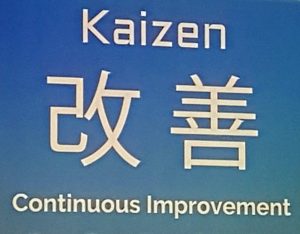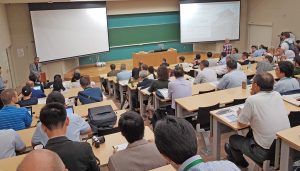Blog by Emiel van Puffelen, 4TU.CEE leader WUR
In general Japanese brands are known for their top quality, low breakdown rates, and innovative design. This group of islands has the most leading camera and electronic brands, such as: Canon, Casio, Konica Minolta, Nikon, Nintendo, Olympus, Panasonic, Pioneer, Sony, Toshiba and Yamaha. And the car engineers add some very innovative and successful brands to that list. While other major car brands are still struggling to leave 100% fossil drive, Japan is already developing the fifth generation of hybrid cars. And in many other engineering markets, Japan is leading as well.

Shinkansen train
And there is another Japanese miracle: their public transport system. The cities have extremely dense and large subway and local train systems. All the lines offer very frequent connections, are always on time and have good facilities. The networks of different cities are connected by the famous Shinkansen high-speed trains.
That brings us to the question; what is the secret of Japanese engineering? How come there are so many top quality brands, with low breakdown rate and innovative design? Why is their public transportation so much better?
Kaizen
Travel to Japan and the answer will become obvious. It is a personal characteristic: dedication, combined with a group characteristic: kaizen (continuous improvement):
- The Japanese are very dedicated; they have a high drive to do everything 100% right, with respect for other people and the environment. An example: nobody will litter; the streets are very clean and very few trash bins are needed as everybody will take trash home.
- For organisations the combined goal is kaizen; all members of a group are intrinsically motivated to coordinate their actions to achieve that. The subsequent Toyota Prius models are a clear example of high-speed continuous improvement.
Can we teach that kind of dedication with respect combined with intrinsic motivation for kaizen at our universities?
That question brings us to the CDIO 2018 conference in Kanazawa Japan.
CDIO Conference Japan

At the conference much emphases was put on soft skills and interdisciplinarity. I think that dedication and kaizen have to be embedded in society. It is a long way to achieve that and universities can be the starting point; so:
Let’s put dedication and kaizen on top of our list for future proof engineering softs skills!
One of the first steps would be to closely look at the CDIO methodology and see how it can include kaizen better. CDIO stands for: Conceiving – Designing – Implementing – Operating and should in my opinion be followed by ‘Evaluation’. Not merely to conclude, but to also serve as a starting point of the next CDIO improvement cycle. Furthermore I am a strong supporter of putting more focus on soft skills and interdisciplinarity in the CDIO methodology. There is certainly plenty to discuss at the CDIO International Working Meeting this autumn in Delft.




